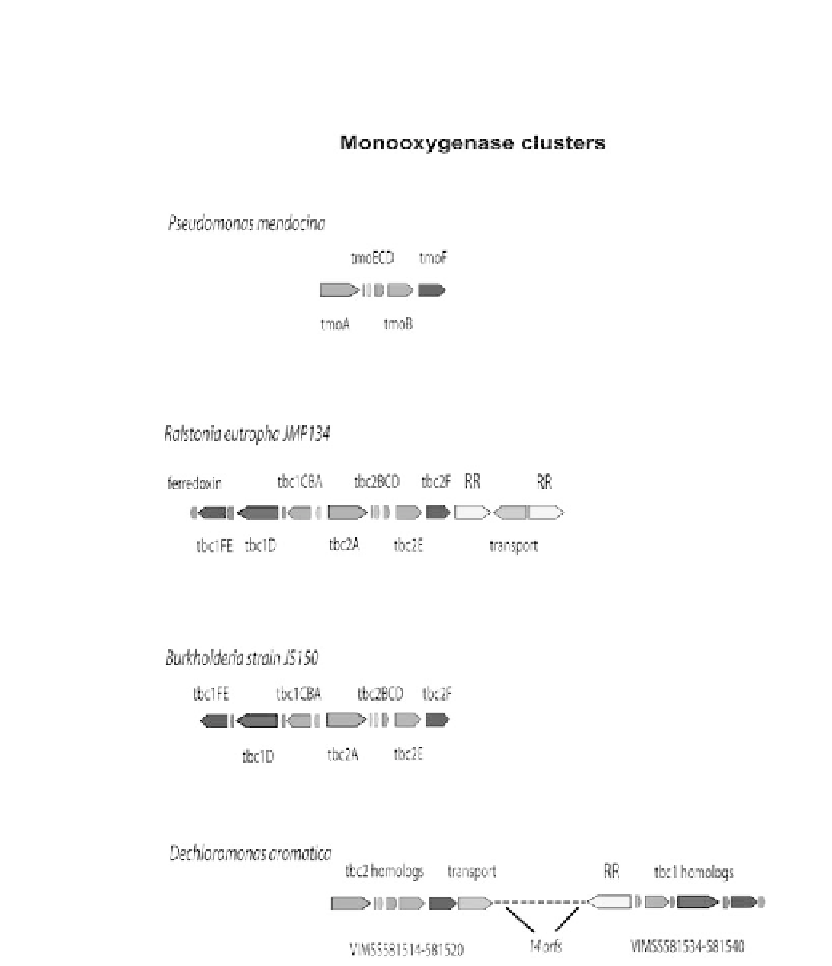Biology Reference
In-Depth Information
(methyl accepting chemotaxis protein), which would confer the ability to display a
chemotactic response to aromatic compounds.
Figure 2.
Catabolic oxygenases of aromatic compounds: Synteny between
D. aromatica
,
P.
mendocina
,
Burkholderia
, and
R. eutropha
. Orthologs gene clusters for
P. mendocina
,
R. eutropha
JMP134,
Burkholderia
JS150, and
D. aromatica
are shown.
Dechloromonas
aromatica
possesses two
oxygenase gene clusters that are syntenic to the tbc1 and 2 catabolic gene clusters of Burkholderia
JS150, but with an inversion and insertion in the chromosome. Also shown are the tmo (toluene
mono-oxygenase) toluene degradative cluster of
P. mendocina
and the tbc1 and tbc2-like (tcb:
toluene, chlorobenzene, and benzene utilization) gene cluster of
R. eutropha
(VIMSS896207-896222,
Burkholderia protein names were used for consistency). The first seven orfs (encoding a tbc1-
like cluster) of
R. eutropha
JMP134 are orthologs to the PoxABCDEFG (phenol hydroxylase) and
P0123456 genes of
Ralstonia
sp. E2 and
R. eutropha
H16, respectively. Orthologs can be identified
as having the same size and color scheme.
















